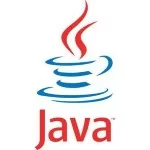Java Reflection Tutorial
In this tutorial, I mainly write some examples to introduce what Java reflection can do. Hopefully, it can give you an overview of this concept. Please leave your comment for suggestions.
What is Reflection?
In brief, reflection is the ability of a program to examine and modify the structure and behavior of an object at runtime.
This concept is sometimes mixed with introspection. Introspection (Type introspection) is the ability of a program to examine the type or properties of an object at runtime. Therefore, it is a subset of reflection. Some languages support introspection, but do not support reflection, e.g., C++.
Why do we need reflection?
Reflection enables us to do the following:
- Examine an object’s class at runtime
- Construct an object for a class at runtime
- Examine a class’s field and method at runtime
- Invoke any method of an object at runtime
For example, JUnit use reflection to look through methods tagged with the @Test annotation, and then call those methods when running the unit test. (Here is a set of examples of how to use JUnit.)
Example 1: Get class name from object
01 02 03 04 05 06 07 08 09 10 11 12 13 14 15 | package myreflection;import java.lang.reflect.Method;public class ReflectionHelloWorld { public static void main(String[] args){ Foo f = new Foo(); System.out.println(f.getClass().getName()); }}class Foo { public void print() { System.out.println("abc"); }} |
Output:
1 | myreflection.Foo |
Example 2: Invoke method on unknown object
For the code example below, image the types of an object is unknown. By using reflection, the code can use the object and find out if the object has a method called “print” and then call it.
01 02 03 04 05 06 07 08 09 10 11 12 13 14 15 16 17 18 19 20 21 22 | package myreflection;import java.lang.reflect.Method;public class ReflectionHelloWorld { public static void main(String[] args){ Foo f = new Foo(); Method method; try { method = f.getClass().getMethod("print", new Class<?>[0]); method.invoke(f); } catch (Exception e) { e.printStackTrace(); } }}class Foo { public void print() { System.out.println("abc"); }} |
1 | abc |
Example 3: Create object from Class instance
01 02 03 04 05 06 07 08 09 10 11 12 13 14 15 16 17 18 19 20 21 22 23 24 25 26 27 28 29 30 | package myreflection;public class ReflectionHelloWorld { public static void main(String[] args){ //create instance of "Class" Class<?> c = null; try{ c=Class.forName("myreflection.Foo"); }catch(Exception e){ e.printStackTrace(); } //create instance of "Foo" Foo f = null; try { f = (Foo) c.newInstance(); } catch (Exception e) { e.printStackTrace(); } f.print(); }}class Foo { public void print() { System.out.println("abc"); }} |
Example 4: Get constructor and create instance
01 02 03 04 05 06 07 08 09 10 11 12 13 14 15 16 17 18 19 20 21 22 23 24 25 26 27 28 29 30 31 32 33 34 35 36 37 38 39 40 41 42 43 44 45 46 | package myreflection;import java.lang.reflect.Constructor;public class ReflectionHelloWorld { public static void main(String[] args){ //create instance of "Class" Class<?> c = null; try{ c=Class.forName("myreflection.Foo"); }catch(Exception e){ e.printStackTrace(); } //create instance of "Foo" Foo f1 = null; Foo f2 = null; //get all constructors Constructor<?> cons[] = c.getConstructors(); try { f1 = (Foo) cons[0].newInstance(); f2 = (Foo) cons[1].newInstance("abc"); } catch (Exception e) { e.printStackTrace(); } f1.print(); f2.print(); }}class Foo { String s; public Foo(){} public Foo(String s){ this.s=s; } public void print() { System.out.println(s); }} |
Output:
1 2 3 | nullabc |
In addition, you can use Class instance to get implemented interfaces, super class, declared field, etc.
Example 5: Change array size though reflection
01 02 03 04 05 06 07 08 09 10 11 12 13 14 15 16 17 18 19 20 21 22 23 24 25 26 27 28 29 30 31 32 33 34 35 36 37 38 39 40 | package myreflection;import java.lang.reflect.Array;public class ReflectionHelloWorld { public static void main(String[] args) { int[] intArray = { 1, 2, 3, 4, 5 }; int[] newIntArray = (int[]) changeArraySize(intArray, 10); print(newIntArray); String[] atr = { "a", "b", "c", "d", "e" }; String[] str1 = (String[]) changeArraySize(atr, 10); print(str1); } // change array size public static Object changeArraySize(Object obj, int len) { Class<?> arr = obj.getClass().getComponentType(); Object newArray = Array.newInstance(arr, len); //do array copy int co = Array.getLength(obj); System.arraycopy(obj, 0, newArray, 0, co); return newArray; } // print public static void print(Object obj) { Class<?> c = obj.getClass(); if (!c.isArray()) { return; } System.out.println("\nArray length: " + Array.getLength(obj)); for (int i = 0; i < Array.getLength(obj); i++) { System.out.print(Array.get(obj, i) + " "); } }} |
Output:
1 2 3 4 | Array length: 101 2 3 4 5 0 0 0 0 0Array length: 10a b c d e null null null null null |
Summary
The above code examples shows a very small set of functions provided by Java reflection. Reading those examples may only give you a taste of Java reflection, you may want to Read more information on Oracle website.



Great tuto. I could learn only reading. Thanks !
Nice post. Easy example to understand the concepts.
nice tutorial. It’s easy to understand the concept.